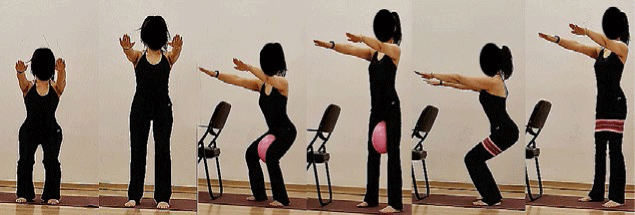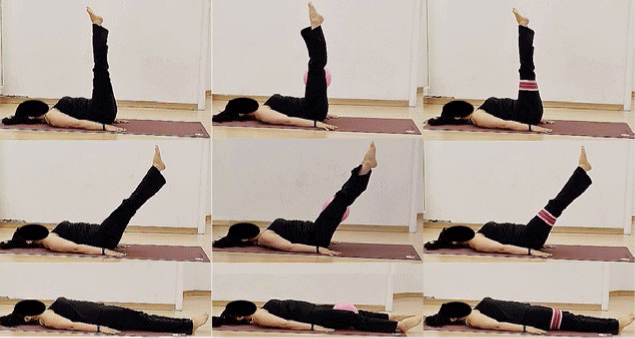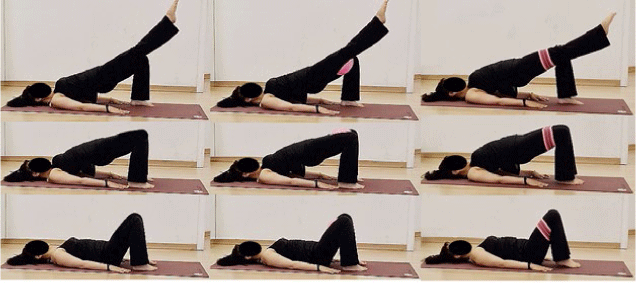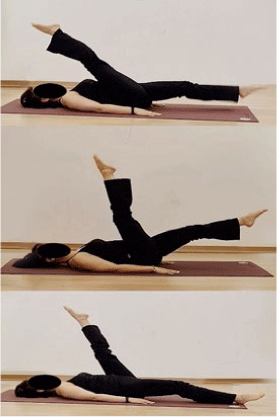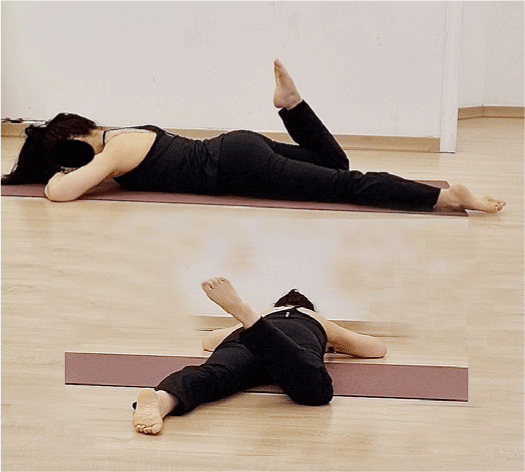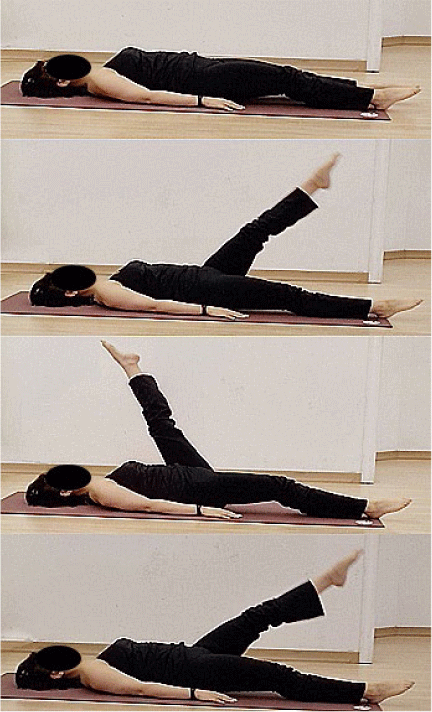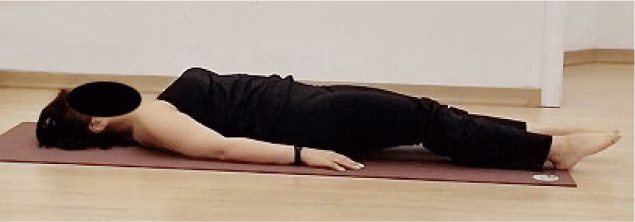INTRODUCTION
Falls are a major global public health issue and the second leading cause of unintentional injury-related deaths worldwide. falls are the most common and fatal accidents among adults aged 65 and older. The mortality rate per 100,000 population increases with age: 18.2 in their 70s, 61.3 for those under 84, and 124.5 for those aged 85 and older. Falls not only cause injuries but may also result in death or permanent disability, often requiring long-term rehabilitation and care, which significantly reduces the quality of life in older adults and increases the burden on social healthcare systems.2 Falls were once regarded as unavoidable accidents, but are now seen as preventable events, prompting diverse multidisciplinary strategies. The World Health Organization (WHO) emphasizes that scientifically grounded prevention strategies are effective in reducing the incidence and social costs of falls.3, 4 In line with this, organizations such as the Korea Disease Control and Prevention Agency have introduced elderly fall prevention programs involving exercise, education, and expert training, which are relatively low-cost but highly effective in improving muscle strength, balance, and environmental factors. Several previous studies have shown that exercises aimed at improving muscle strength, Range of Motion (ROM), and both dynamic and static balance significantly reduce fall rates.
A key element in preventing falls is enhancing lower extremity alignment and balance through targeted strengthening of hip muscles. Sarcopenia, commonly observed in the elderly, significantly affects hip muscle function and contributes to misalignment and instability. Several previous studies have shown that exercises aimed at improving muscle strength, range of motion (ROM), and both dynamic and static balance significantly reduce fall rates. Lower extremity alignment refers to the straight anatomical positioning of the hip, knee, and ankle, serving as a foundation for both static posture and dynamic movement. This alignment depends on the integrated function of the neuromuscular and sensory systems, including proprioception, visual-vestibular coordination, and neuromuscular control. When misalignments such as genu varum, genu valgum, or excessive foot pronation occur, they disturb the transmission of ground reaction forces, compromise postural stability, and increase fall risk.
Balance is generally categorized into static and dynamic components. Static balance involves maintaining a stable posture in the absence of movement or external force, while dynamic balance refers to the ability to maintain postural control during movement or in response to external perturbations. Impairment in either type of balance greatly elevates fall risk. Anatomically, the hip adductors originate from the pelvis and insert into the inner or posterior part of the femur, contributing to postural control that ensures both stability and flexibility of the body, and reducing the mechanical load on the lumbar spine. Therefore, the function of the hip joint plays a crucial role not only in dynamic movements but also in situations requiring static balance and posture maintenance, such as lifting heavy objects. During these activities, body weight is evenly distributed across both lower limbs, and the hip adductors and abductors contract simultaneously to maintain the pelvis in a neutral position, ensuring symmetrical alignment of the lower limbs and overall body stability. This process plays a crucial role in preventing problems such as back pain, postural abnormalities, and falls. International studies have reported the effectiveness of exercise interventions even in the ultra-elderly population (80 years and older). For instance, Gardner et al. found that a balance training program significantly reduced fall incidence in individuals aged 80 and above. Orr also emphasized the importance of strengthening hip muscles for maintaining alignment and postural control.
In contrast, domestic studies have demonstrated beneficial results among elderly individuals aged 60 to 70, although systematic interventions specifically targeting the ultra-elderly remain limited. Specifically, research utilizing small equipment such as resistance bands and mini balls is limited. Resistance bands are widely used in both open and closed kinetic chain exercises and are effective in improving joint stability and motor control. The mini ball, originally developed for rehabilitation in Swiss physical therapy, induces postural instability to stimulate proprioception and target deep hip muscles. These tools enhance neuromuscular coordination by improving the interaction among agonists, antagonists, synergists, and stabilizer muscles, rather than increasing motor unit recruitment. The instability created by small equipment demands greater neuromuscular adaptation, particularly in muscles like hip adductors, which are rarely activated during normal walking. Therefore, this study aims to investigate the effects of a hip muscle strengthening program using bands and mini balls on lower extremity alignment and both static and dynamic balance in the elderly, and to propose a practical, sustainable exercise program for fall prevention.
METHODS
A total of twenty-five adults aged 65 years or older residing in a district of Daegu, South Korea, including members of a local senior welfare center, were recruited based on predefined inclusion and exclusion criteria. This study was approved by the Institutional Review Board of Daegu University (IRB No.: 1040621-202408-HR-067). Inclusion criteria were age 65 years or older, ability to perform daily activities independently, and capacity to participate in group exercise sessions. Exclusion criteria included a history of dementia or stroke, visual impairments, use of medications that affect balance, recent fractures or related treatments, and current participation in other exercise programs.
The exercises were designed based on a range of motion (ROM) principles, targeting six directions of hip joint movement (flexion, extension, abduction, adduction, internal rotation, and external rotation). To stimulate these movements, the time allocation was distributed as follows: extension 28%, abduction and adduction 39%, internal and external rotation 24%, and cool-down 5%. ROM is a key indicator for evaluating musculoskeletal function, reflecting not only joint flexibility and mobility but also the functional state of muscles, ligaments, tendons, and the joint capsule Enhancing in the elderly, a decrease in the range of joint motion is directly related to decreased balance, impaired walking ability, restrictions in activities of daily living, and increased risk of falls. ROM that can positively change the functional state was selected as the basis. When exercising, the exercise methods and points to keep in mind are as follows (Table 1).
In this study, the Angles-Video Goniometer was used to measure angles related to lower extremity alignment. According to a previous study, this application demonstrated an extremely high correlation with mechanical and digital goniometers (r > 0.90, p < 0.01), as well as high reliability for repeated measurements (Intra-Class Correlation Coefficient, ICC> 0.90). The Angles-Video Goniometer utilizes the smartphone’s built-in gyroscope and camera to quantify motion, offering an accurate method for measurement.
The measurement protocol follows the anatomical definitions presented by Schulte and Yarasheski by connecting the greater trochanter to the midpoint of the joint line and the midpoint of the knee joint line to the lateral malleolus. by connecting the greater trochanter to the midpoint of the knee joint line and the midpoint of the knee joint line to the lateral malleolus. This method ensures precise angle detection. During measurements, participants were instructed to fully relax the hamstrings, gluteal muscles, and quadriceps. According to Jeon et al, the intra-rater reliability of this protocol demonstrated an ICC of 0.95.
The BBS was used to assess the participants’ dynamic balance ability before and after the exercise intervention. It includes fourteen tasks ranging from sitting to standing and changing postures, with each task scored from 0 to 4, resulting in a total score of 56 points. This tool has demonstrated excellent reliability (intra-rater r = 0.99, inter-rater r = 0.98) and validity.
The measurement involves drawing a line from the center of pressure (COP) on the force plate in the direction of gravity, using left-right and front-back sway distances as x and y values (trace length).
In this experiment, the 95% area of the COP movement, representing static balance, is calculated as a circular area based on the distance traveled. The remaining 5% is excluded. A lower value indicates better balance ability.
Static balance was measured using a Bluetooth-enabled Wii Balance Board (Nintendo, Kyoto, Japan) and the Balancia v1.0 program. The COP trace was tracked along the x and y axes, and the A95 area was calculated. Participants stood barefoot on the board with eyes closed for 30 seconds, repeatedly three times. The total movement area (mm) was measured, and the average was calculated. An instructor was present for safety.
The Wii Balance Board has high test-retest reliability (ICC = 0.66 to 0.94) and intrareader reliability (ICC = 0.92 to 0.98), ensuring the reliability of the measurements.
All data analyses in this study were conducted using SPSS (Statistical Package for the Social Sciences) version 23.0 for Windows (SPSS Inc., Chicago, IL, USA). To assess the universal characteristics of the participants, an independent t-test was performed. The normality of the measured variables was evaluated using the Kolmogorov-Smirnov test.
To analyze the changes in lower extremity alignment as well as static and dynamic balance indicators over time between the experimental group and the control group, a repeated measures two-way analysis of variance (ANOVA) was employed. When significant interaction effects were identified, post-hoc analyses were conducted using independent t-tests, with the Bonferroni correction applied to account for multiple comparisons. The significance level was set at α = 0.025.
RESULTS
Table 2 showed the characteristic of participants in each group. Significant between-group differences were observed in the back knee angle, with the experimental group exhibiting significant within-group improvement (p<0.05) (Table 3). Similarly, dynamic balance, as measured by BBS scores, showed significant improvements both between and within groups (p<0.05) (Table 4). In contrast, no significant between-group differences were found in static balance (Area95), although a significant within-group improvement was observed only in the control group (p<0.05) (Table 5).
| Variable | Group | Mean ±SD | P |
|---|---|---|---|
| Age | EG | 82.23± 8.03 | 0.96 |
| CG | 82.41± 8.10 | ||
| Height | EG | 156.92± 5.13 | 0.97 |
| CG | 157.± 4.07 | ||
| Weight | EG | 55.69± 5.06 | 0.75 |
| CG | 56.33± 4.87 | ||
| Body mass index | EG | 22.56± 1.38 | 0.69 |
| CG | 22.86± 1.94 |
| Group | Pre | Post | Difference value | Time (P value) | Group×time (P value) | Group (P value) | P value |
|---|---|---|---|---|---|---|---|
| EG | 4.87±3.37 | 4.47±2.92 | -0.40±3.52 | 0.06 | 0.15 | 0.41 | 0.55 |
| CG | 7.21±5.86 | 4.56±3.77 | -2.65±4.03 | - | - | - | 0.03* |
DISCUSSIONS
In this study, we explored the mechanisms of exercise using a small tool that focuses on strengthening hip muscles, in contrast to existing approaches that focus on whole-body exercises. As a result, in relation to lower extremity alignment, the experimental group using the small tool showed statistically significant improvement in the back knee angle in both within-group and between-group comparisons. This suggests that strengthening the hip muscles increases the stability of the lower extremity muscle group and contributes to redistributing the mechanical load on the knee joint. In this study, the back knee angle was not simply a measure of knee hyperextension but was interpreted as a decrease in the range of motion of the knee joint, which is related to an increased risk of falls in the elderly. Therefore, correction of the back knee angle in the elderly with a hunched posture was considered to improve lower extremity alignment.
Do et al. emphasized the importance of hip muscle strength in patients who underwent knee joint replacement, that intervention programs focused solely on quadriceps strengthening did not produce significant effects. In contrast, interventions that included hip abduction exercises led to substantial improvements in pain, symptoms, and activities of daily living, as well as a reduction in fall risk. These findings align with the results of this study, supporting the idea that hip muscle strengthening contributes to improved knee joint function. Achieving a back knee angle close to 180 degrees necessitates adequate extension mobility in both the hip and knee joints. In elderly individuals with restricted knee range of motion, enhancing hip extension may play a compensatory role in improving posterior knee alignment. In this study, resistance bands were used to effectively strengthen the quadriceps and hip abductors. which also led to simultaneous strengthening of synergistic muscles such as the hamstrings, calf muscles, and core. Additionally, the use of mini balls activated the adductors and core muscles, which may have contributed to improved muscle tension and coordination, thereby enhancing muscle endurance, postural stability, and joint stability in the knee and ankle. For the elderly, the knee joint often experiences degenerative changes, muscle weakness, and pain, which can limit its range of motion and interfere with activities such as lifting the foot during walking and generating propulsion. Moreover, limited knee range of motion can lead to decreased proprioceptive sensation, affecting joint position sense and static/dynamic balance. The significant improvement in back knee angle observed in this study reflects these biomechanical mechanisms, suggesting that correcting knee flexion posture contributes to improved lower extremity alignment and walking stability. Regarding dynamic balance, the BBS showed significant improvements within and between groups in the experimental group using small tools (p<0.05). Notably, participants in their nineties showed greater improvements than those in their 80s and 70s, indicating that equipment-based exercise programs can be effective even in older age groups. This finding contrasts with previous research that reported limited intervention effects in older adults.
In contrast, the Area95 analysis for static balance did not show significant differences between groups, and significant improvements were observed only in the control group in within-group analysis (p<0.05). This finding aligns with previous research, which indicated that exercises performed in a stable environment are more effective for improving static balance. The use of small tools in the experimental group may have distracted sensory focus during training, and some participants in their 90s showed a tendency for worsened Area95 scores after the intervention, suggesting that tool-based interventions may have been less effective or caused distraction in older participants.
The limitations of this study are as follows: First, due to individual differences in baseline physical health, older adults may not experience uniform exercise effects. For instance, individuals with severe muscle weakness or advanced joint degeneration may require a longer period to show improvements and may need adjustments in exercise intensity and frequency. Second, although significant improvements in lower extremity alignment and dynamic balance were observed even among the oldest participants, the small sample size limits the generalizability of the findings. Future research should aim to include larger and more diverse samples to enhance external validity and further verify the effects of such interventions. Third, a limitation of this study lies in the sustainability of the observed benefits. When the same participants repeated the hip muscle strengthening program two weeks after the intervention, they did not maintain the same level of precision as during the intervention, although their performance did not appear to decline markedly. However, when the program was repeated four weeks later, participants failed to reach the previously achieved level of accuracy and only began to regain some of the acquired skills after receiving two consecutive days of more intensive training. This highlights the importance of repeated and consistent training to sustain the effects of the intervention. Therefore, both the program’s quality and its continuous implementation, as well as the elderly participants’ motivation and management to prevent falls, are crucial. The researcher hopes that future studies continue to investigate exercise programs for fall prevention and that this study will serve as a foundation for developing exercise programs that improve fall prevention and the independence of older adults.
CONCLUSION
Hip joint muscle strengthening programs using small equipment effectively enhance lower limb alignment and dynamic balance, both of which are critical factors in fall prevention. In contrast, exercises performed in a stable environment without small equipment are more effective for improving static balance, which is also important for preventing falls. These findings underscore the importance of tailoring fall prevention strategies based on the type of balance (static or dynamic) and the specific needs of individuals. Future research should focus on developing personalized fall prevention programs and examining their long-term effectiveness.









